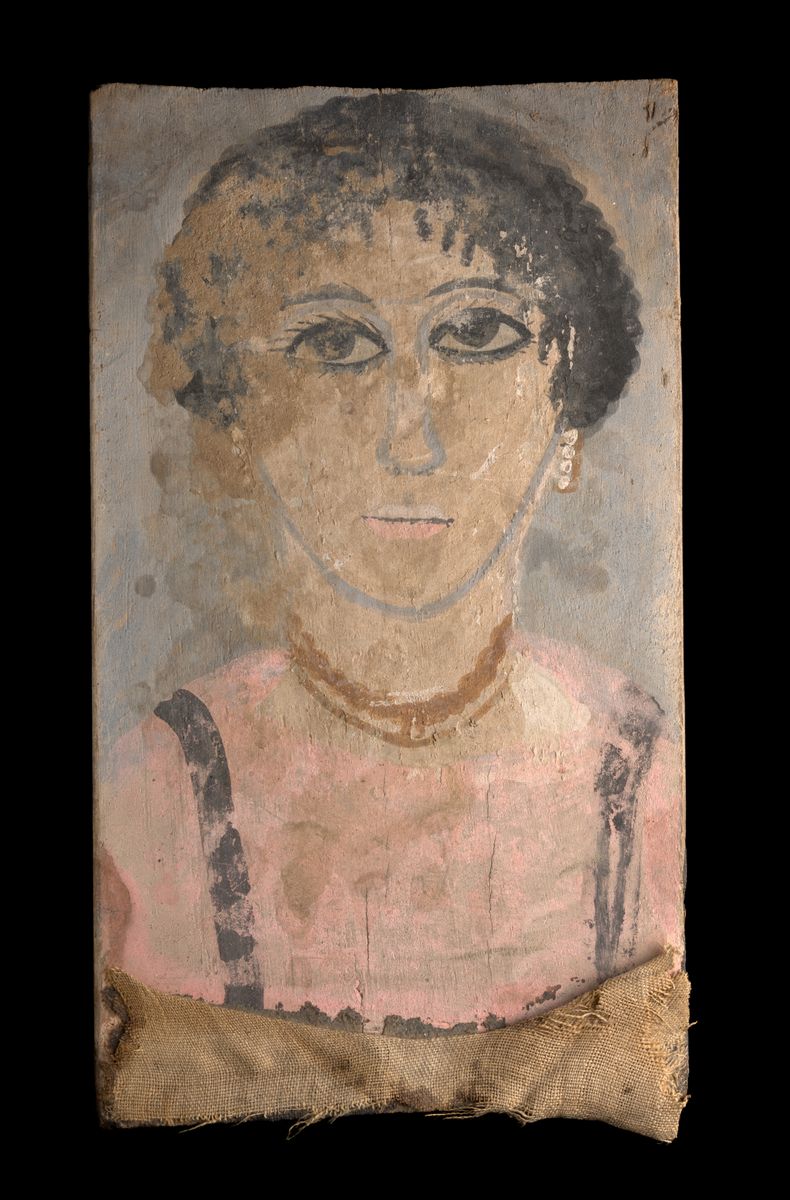Portrait of a woman from a mummy
Place found:er-Rubayat, Egypt
Culture: Egyptian
Period: Roman period
Date: 2nd-3rd century A.D.
Dimensions:
12 11/16 × 7 1/2 in. (32.2 × 19 cm)
Credit Line: Gift of Gilbert M. Denman, Jr.
Object number: 91.80.94
Markings: On the back, a white paper label with the number 12 printed in black.
On the back, a round stamp, in black: BUNDESDENKMALAMT / WIEN
On the back, a round stamp, in purple: SAMMLUNG Theodor GRAF
Provenance: probably found at er-Rubayat, Egypt; with Theodor Graf (1840-1903), Vienna; with Bruno Kertzmar, Vienna by 1930; sold, Sotheby's, London, July 27, 1931, lot 26, to Franklin; with Jacob Epstein (1880-1959), London (according to 1988 Sotheby's catalogue); Sotheby's, New York, June 15, 1988, lot 36; sold by Charles Ede, Ltd., London, to Gilbert M. Denman, Jr. (1921-2004), San Antonio, 1989; Gilbert M. Denman, Jr., by gift to San Antonio Museum of Art, 1991
Published References
Sotheby's, London, July 27, 1931, lot 26.
Sotheby's, New York, June 15, 1988, lot 36.
Charles Ede Gallery, Antiquities, Catalogue 148 (London, 1989), no. 42.
K. Parlasca & H. G. Frenz, Ritratti di mummie, vol. 4 (Rome: L'Erma di Bretschneider, 2003), p. 81, no. 850, pl. 184.1
Label Text
Group label with 91.80.93:
During the Roman Period, mummy masks became more naturalistic and less stylized. Panel portraits, perhaps used to decorate the owner's home during life, were set over the face of the mummy and bandaged into place. One technique used pigment suspended in wax that was manipulated while the wax was liquefied. This technique is known as encaustic painting. The other technique used tempera pigments applied either directly on the panel or over a layer of gesso. (Gallery Label, 8/2002).
During the Roman Period, mummy masks became more naturalistic and less stylized. Panel portraits, perhaps used to decorate the owner's home during life, were set over the face of the mummy and bandaged into place. One technique used pigment suspended in wax that was manipulated while the wax was liquefied. This technique is known as encaustic painting. The other technique used tempera pigments applied either directly on the panel or over a layer of gesso. (Gallery Label, 8/2002).
On view
The San Antonio Museum of Art is in the process of digitizing its permanent collection. This electronic record was created from historic documentation that does not necessarily reflect SAMA's complete or current knowledge about the object. Review and updating of such records is ongoing.




 This resource has been made possible in part by the National Endowment for the Humanities: Exploring the Human Endeavor.
This resource has been made possible in part by the National Endowment for the Humanities: Exploring the Human Endeavor.
